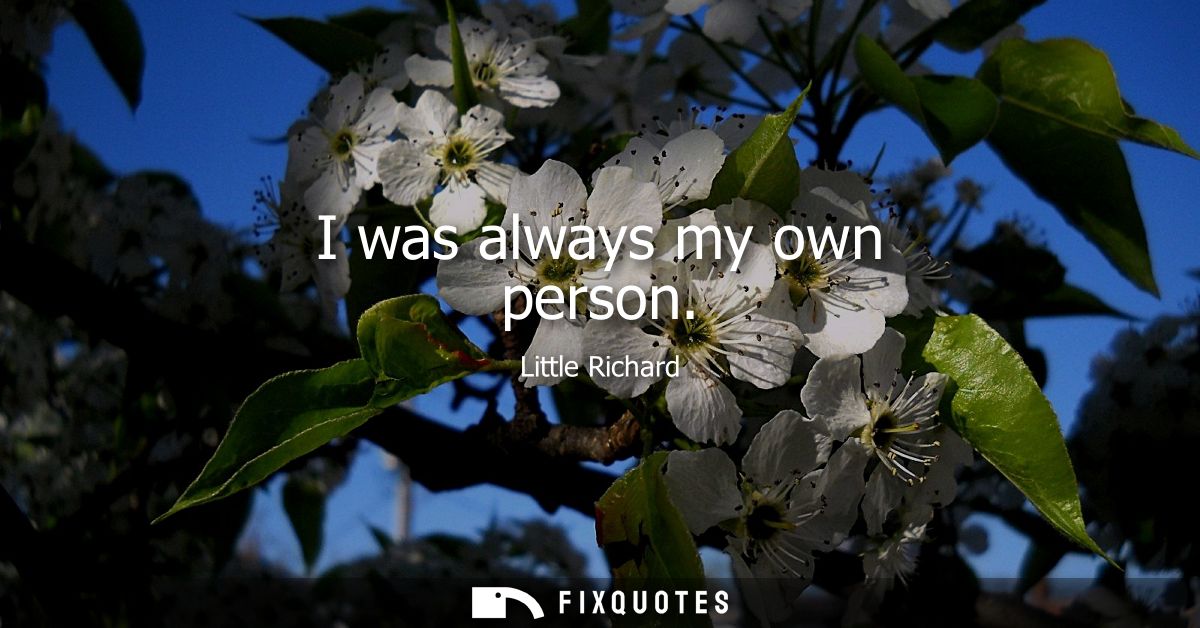"I was always my own person"
About this Quote
Little Richard’s declaration, “I was always my own person,” resounds with a spirit of self-determination and individuality that defined both his life and his career. Growing up in an era characterized by rigid social expectations, particularly for Black artists and those who dared to challenge cultural norms, he stood as a figure who strode boldly beyond the confines imposed upon him. The phrase suggests an unwavering commitment to authenticity, an insistence on forging a personal identity that was distinct, unapologetic, and vibrant.
Throughout his trajectory in the music industry, Little Richard was known for his flamboyant performance style, gender-bending fashion, and a sound that broke the boundaries of traditional rhythm and blues by fusing gospel, boogie-woogie, and rock ‘n’ roll. In a culture where deviating from convention could lead to marginalization, his ability to remain true to himself was itself a radical act. By refusing to be molded by commercial pressures or societal expectations, he became a catalyst for the revolution that rock ‘n’ roll would ignite, not only as a genre but as a movement of self-expression.
The statement also hints at the internal fortitude that enabled his resilience in the face of obstacles. His journey serves as an emblem of how individuality can be an anchor amid the turbulence of fame, prejudice, and personal struggle. For younger generations, Richard’s stance offers a model of empowerment: embracing one’s quirks and differences as strengths rather than weaknesses.
Moreover, his sense of being “his own person” wasn’t confined to music. It extended to his public persona, his attitude toward race relations, and his open exploration of identity and sexuality. Even at times when he felt compelled to suppress or compartmentalize aspects of himself, the underlying drive to carve out a space true to his experience never waned. In asserting his personhood, Little Richard championed the power and necessity of living honestly, an ethos that inspired artists across genres and continents.
About the Author

